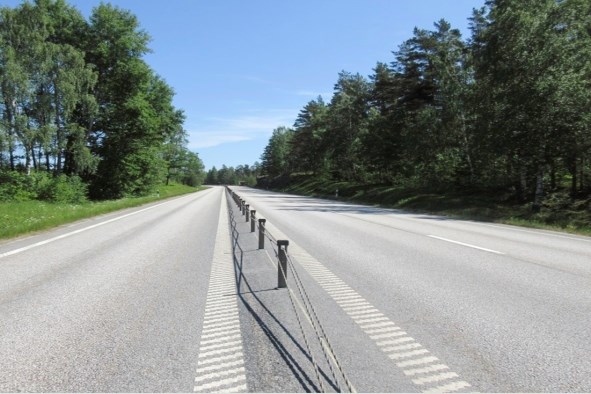THUNDER BAY – Northwestern Ontario leaders are welcoming a commitment from the provincial government to test a highway model they’ve long said could make northern highways safer.
Transportation Minister Caroline Mulroney announced earlier this week her government will test the “2 + 1” highway model, which slightly widens two-lane highways to add a median and passing lanes at regular intervals, often every two to five kilometres.
The government is considering two roughly 15-kilometre long stretches of Highway 11 north in the North Bay area for what it said will be the first 2+1 pilot project in North America.
Wendy Landry, Shuniah mayor and president of the Northwestern Ontario Municipal Association (NOMA) called Mulroney’s announcement an encouraging sign the province is listening to safety concerns from northern communities, even if the potential benefits are still years away.
“This is something that NOMA’s been advocating for for a very long time,” she said. “There are a lot of things that need to be done to increase highway safety, but this is definitely a step in the right direction.”
The model has worked well to reduce head-on collisions in Europe, she pointed out, with a 2016 study finding 2+1 highways cut fatalities and serious injuries by 50 per cent in Sweden.
Landry hopes the pilot project will offer strong evidence the model can do the same in Canada, offering a path to improve safety on long two-lane stretches of Northwestern Ontario highways.
Communities along Highway 11 have long advocated for 2 + 1 highways as a cheaper alternative to four-laning and twinning.
“It makes sense where we can’t do [separated] highways, for just the extreme cost of our geographical location, the rock, everything you’re dealing with,” said Landry. “It’s great we’re getting [separated] highways happening this way now, but where we can’t get them, it’d be really good [to get] the 2 + 1.”
“It would have been great if we could participate in the pilot too, but being realistic… it’s a big investment,” she added. “Let’s hope it goes well and it comes to Northwestern Ontario.”
Building the 2 + 1 highway is expected to cost $1 to $3 million dollars per kilometre, Mulroney said.
The public can comment on the pilot online at the Ministry of Transportation’s Technical Consultation Portal until Jan. 11.
The province will then evaluate comments and announce final locations, proceeding to a preliminary design stage.
The two locations currently under consideration are on Highway 11 between Sand Dam Road and Ellesmere Road, north of North Bay, and between Highway 64 and Jumping Cariboo Lake Road, in the Temagami area.
It will take another three to four years after designs are completed before reconstruction of the highway is completed, Mulroney estimated.
In the meantime, Landry said NOMA will continue pushing the province to take action in other areas to address highway safety concerns, many of which centre around transport trucks.
The association is advocating for stricter training requirements for truck drivers, as well as steeper fines for drivers and trucking companies that violate safety rules, she said.
“There’s a lot of things we have to do to increase highway safety, especially with the recent accidents we’ve been experiencing in the area,” she said. “I think that goes back to training, increasing fines, and things like that.”
She also hopes the federal government will take a look at standardizing truck driver training requirements, which she said can vary wildly from province to province.
